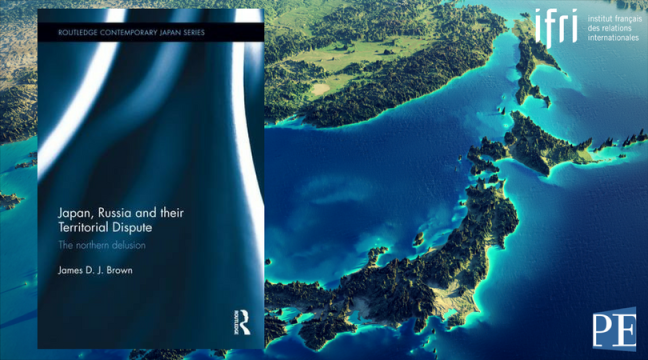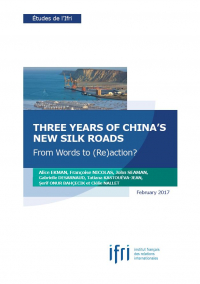 L’auteur défend ici une thèse forte : le postulat du Japon dans ses discussions avec Moscou – à savoir le retour, à terme, sous souveraineté nippone, de la totalité des îlots sous contrôle russe depuis 1945 – est irréaliste et illusoire.
L’auteur défend ici une thèse forte : le postulat du Japon dans ses discussions avec Moscou – à savoir le retour, à terme, sous souveraineté nippone, de la totalité des îlots sous contrôle russe depuis 1945 – est irréaliste et illusoire.
Ce parti-pris rend le propos dynamique et stimulant. L’ouvrage s’organise autour de quatre courts chapitres dans lesquels sont présentés puis relativisés, voire invalidés, les arguments japonais. L’argument légal et historique tout d’abord : Tokyo présente les quatre îles les plus méridionales des Kouriles comme son «  territoire inhérent » et estime que l’Union soviétique en a repris possession en août 1945 de manière déloyale, en violation du pacte de non-agression. L’auteur minore cet argument, montrant que la Russie maintient une interprétation différente qui peut être recevable, et qu’avant tout, les Kouriles Sud sont aujourd’hui un symbole fort de son identité de vainqueur de la Seconde Guerre mondiale.
territoire inhérent » et estime que l’Union soviétique en a repris possession en août 1945 de manière déloyale, en violation du pacte de non-agression. L’auteur minore cet argument, montrant que la Russie maintient une interprétation différente qui peut être recevable, et qu’avant tout, les Kouriles Sud sont aujourd’hui un symbole fort de son identité de vainqueur de la Seconde Guerre mondiale.
Ensuite, l’argument économique – le Japon estime que des incitations financières permettront de créer un environnement favorable à des concessions russes sur la question territoriale – est invalidé. Si la Russie cherche bien à attirer d’importants investissements pour développer son Extrême-Orient, Moscou ne considère plus que Tokyo soit en mesure de proposer une offre décisive : les entreprises japonaises sont peu attirées par la Russie, et son environnement peu favorable aux investissements. Enfin, les dirigeants russes ont rappelé à plusieurs reprises qu’il est inenvisageable de « vendre » le territoire national.
Puis l’auteur aborde l’argument sécuritaire, ou stratégique. Tokyo a tendance à exagérer les tensions entre Moscou et Pékin, et ses tentatives pour éviter un front commun sino-russe, ou contrebalancer la Chine par un rapprochement avec la Russie, sont vouées à l’échec. Si des divergences existent bien au sein du partenariat sino-russe, ce dernier reste essentiel pour Moscou, en particulier depuis la crise ukrainienne. Par ailleurs, l’importance stratégique des Kouriles Sud pour Moscou se renforce : arsenaux et troupes y sont déployés pour mieux contrôler et défendre la mer d’Okhotsk et le passage vers l’Arctique.
L’auteur traite enfin la question des opinions publiques. Tokyo revendique un fort attachement de sa population au retour des quatre îles ; or des sondages récents montrent que les Japonais sont prêts à accepter une solution plus flexible. De manière générale, l’auteur estime que l’émoi serait moindre au Japon qu’en Russie, où un fort nationalisme rend difficile la cession d’une partie du territoire national.
Appuyant son analyse sur de nombreuses sources, japonaises autant que russes, James Brown montre que les deux pays ont toujours des approches irréconciliables sur leur différend territorial. Il n’envisage qu’une seule issue : le retour à la déclaration nippo-russe scellant la reprise des relations diplomatiques en 1956, qui prévoyait qu’une fois un traité de paix signé la Russie transfèrerait les deux plus petites îles des Kouriles Sud au Japon. Tokyo ne s’y est jamais résolu. Y revenir aujourd’hui marquerait sans doute un tournant historique dans la relation de Tokyo avec Moscou, mais pour quels bénéfices, et à quel prix ?

